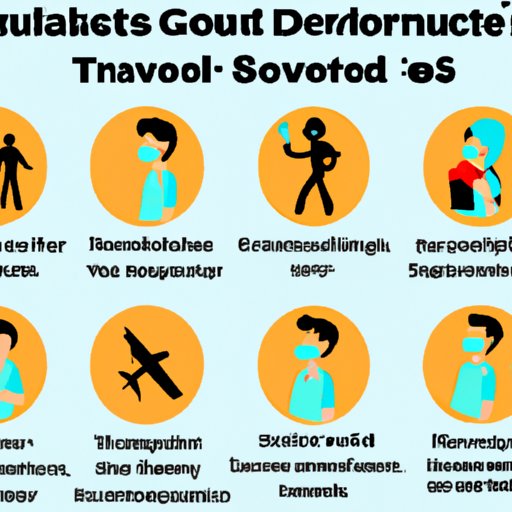Introduction
Traveling during the COVID-19 pandemic has been a controversial topic. With different countries, states, and cities having their own regulations in place, it can be difficult to keep track of what is safe and what isn’t. One of the most important questions many travelers have is whether or not they need to quarantine after their trip. In this article, we will explore the pros and cons of quarantining after travel, as well as how to safely vacation during the pandemic.

Exploring the Pros and Cons of Quarantining After Travel
Before discussing the pros and cons of quarantining after travel, let’s first review the current travel guidelines. The Centers for Disease Control and Prevention (CDC) currently recommends avoiding all nonessential travel, especially if you are at higher risk for severe illness from COVID-19. However, if you do plan to travel, the CDC recommends following all state and local recommendations for travel, wearing a face mask in public settings, and practicing social distancing while you are away.
Now that we have reviewed the current travel guidelines, let’s look at the pros and cons of quarantining after a vacation. Quarantining after a trip can help reduce the spread of the virus by preventing people who may have been exposed to it from coming into contact with others. It also gives travelers peace of mind, knowing that they are taking steps to protect themselves and those around them. On the other hand, quarantining after a trip can be inconvenient and costly, as travelers may have to miss work or school and pay for additional accommodations.
How to Safely Vacation During the Pandemic
If you decide to travel during the pandemic, there are several steps you can take to minimize your risk of exposure to the virus. First, research any restrictions in place in the areas you plan to visit. Many countries, states, and cities have implemented travel restrictions to curb the spread of the virus. Make sure to familiarize yourself with these restrictions before traveling.
It is also important to avoid high-risk areas, such as large gatherings, crowded places, and poorly ventilated indoor spaces. Additionally, stay informed on changing regulations and advisories, as these can change quickly. Finally, consider limiting the number of people you come into contact with during your trip and avoid unnecessary activities, such as sightseeing.

Tips for Minimizing Risk During International Travel
When traveling abroad, there are a few additional precautions you should take to reduce your risk of exposure to the virus. Practice social distancing by keeping at least six feet away from others wherever possible. Wear a face mask in public settings, such as airports, train stations, and public transportation. Wash your hands frequently with soap and water for at least 20 seconds, or use an alcohol-based hand sanitizer if soap and water are not available.
Additionally, avoid touching your eyes, nose, and mouth with unwashed hands. If you feel sick, isolate yourself from others and contact a health care professional. Finally, make sure to follow the latest travel advisories from the U.S. Department of State and the CDC.

Examining the Latest Guidelines on Quarantine After Travel
The latest guidelines from the CDC recommend that travelers quarantine for 14 days after returning from international travel. This is because it can take up to 14 days for symptoms of COVID-19 to appear. However, some states and countries may have different requirements for quarantine after travel. For example, some states may require travelers to quarantine for 10 days instead of 14 days.
It is important to review the recommendations from the CDC, as well as any local and state regulations, before traveling. Additionally, investigate the quarantine requirements for different countries before planning a trip. This information can usually be found on the country’s official tourism website.
Strategies for Keeping Your Family Safe When Returning From Vacation
Once you return home from your trip, there are a few strategies you can employ to keep your family safe. First, stay home as much as possible and avoid contact with other people. Monitor your health for any signs of illness, such as fever, cough, or body aches. If you develop any symptoms, self-quarantine immediately and contact your doctor.
Additionally, wash your hands often and clean and disinfect frequently touched surfaces. Finally, wear a face covering when going out in public and practice social distancing whenever possible. These simple steps will help keep you and your family safe during and after your trip.
Conclusion
Quarantining after travel can be a difficult decision, but it is important to consider the pros and cons before making a decision. Following the guidelines from the CDC and local regulations can help reduce your risk of exposure to the virus. Additionally, taking precautionary measures, such as social distancing and wearing a face mask, can help keep you and your family safe when traveling. Finally, if you do decide to travel, make sure to monitor your health and self-quarantine if necessary.
(Note: Is this article not meeting your expectations? Do you have knowledge or insights to share? Unlock new opportunities and expand your reach by joining our authors team. Click Registration to join us and share your expertise with our readers.)
